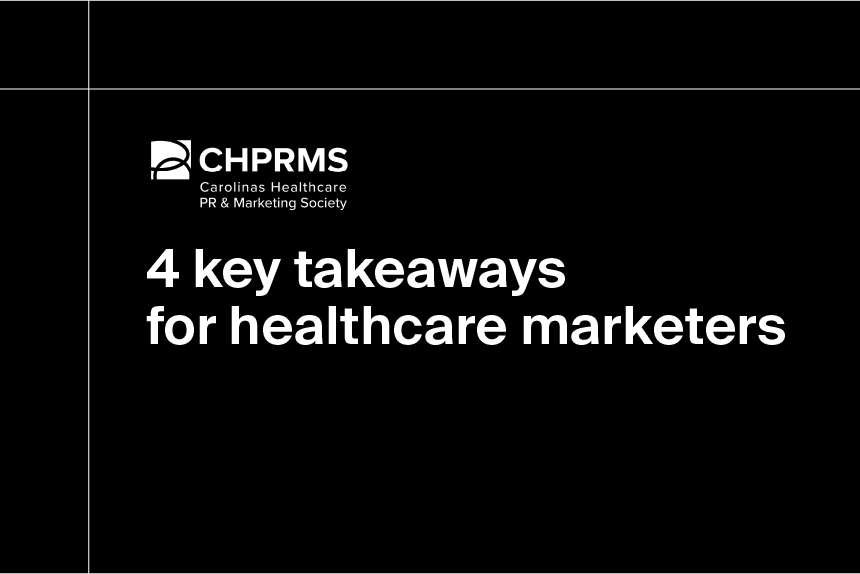If you’re in healthcare sales, you already know how important it is to do your research on prospects and market changes. You need to stay on top of a complex, perpetually changing healthcare landscape, which can be confusing even for seasoned sellers. With thousands of hospitals and facilities in play, you also need to be able to triage and prioritize your most strategically valuable accounts.
How can you ensure you’re meaningfully engaging with key stakeholders and demonstrating your worth? Check out these four tips to engage hospital executives and meet your numbers.
1: Understand the rapidly consolidating market
Understanding the market in which these executives operate is the first step to having informed, impactful conversations. In the healthcare market, Definitive Healthcare has tracked 34 merger and acquisition (M&A) and 159 affiliation and partnership announcements in 2025 alone. With all this activity, it can be difficult to cut through the noise, especially as the space gets smaller and increasingly competitive.
As these consolidations happen, there are lots of new opportunities:
Selling new technology into the market
You’ll want to stay informed and understand the technology and interoperability workflows that are already in place at your target hospital. This way, you can either demonstrate how your solution integrates with their current electronic medical record (EMR) solution or show how your technology can be an upgrade or replacement for their current solution.
Maintaining EMR partnerships
You’ll still want to keep up with EMR M&A announcements to protect your stake—as you know, hospital consolidation contributes to EMR vendor consolidation. It’s important to know when these mergers are happening so you can reconnect with your primary contact at exactly the right time.
Selling a new drug
If you’re looking to find a hospital where you can conduct your clinical trial successfully (within your geographic area and ideal patient population), following M&A activity, executive moves, and financing announcements can help you identify facilities and organizations with the resources and expertise to meet your needs.
Selling medical devices
Staying on top of the industry’s mergers and acquisitions helps your organization accomplish its goals around selling specific product lines or gaining new sources of revenue and a broader target audience.
Staffing a hospital
The movement away from smaller, locally based community hospitals to bigger organizations has encouraged nurses to unionize. When recruiting workers for hospitals, you not only need to stay on top of which hospitals are merging, but you also need to understand the healthcare workforce as unionization, understaffing and retirement come into play.
2: Tie your value prop to VBC measures
A 2017 American Hospital Association (AHA) and Mannat Health survey found that healthcare providers spent $39B per year managing administrative tasks required to comply with federal value-based care (VBC) regulations. Due to the demands of healthcare record-keeping and continued advancements in medical technology, spending is skyrocketing. At the same time, hospital budgets are tighter than ever due to growing staffing costs, rising inflation, and supply chain disruptions.
So how can you work this to your advantage? Try prioritizing hospitals with low-quality performance scores. The healthcare market has a massive amount of data on clinical, quality, and financial performance. Find a data platform that helps you identify hospitals with the lowest quality performance scores or readmission rates (and that contains high-quality title and contact data, so you can reach the right decision-makers).
Within these hospitals, you may find high revenue losses due to federal penalties. If a hospital has high readmission rates for knee replacements, and your solution helps streamline those surgeries, you can help solve their problems from a financial and clinical perspective and make a sale.
If you have the right data provider, you can quickly look at an account and identify any glaring issues that your product may be able to resolve. It’s like you’re looking over their shoulder—and that’s not a bad thing!
3: Map out your executive targets
Once you’ve identified a hospital or IDN that you want to sell to, it’s time to define your top contacts. Typically, those would be some mix of the following:
- Clinicians
- C-suite
- Department heads
- Administrators
How do you find this contact information? Of course, it’s a good idea to leverage your network and current client base for a warm introduction. But if you’re hoping to break into uncharted territories, our data platform provides the title and contact information you need. You want to know where your contact’s priorities lie, where they are investing money, and if any compelling events could create a need for what you have to sell.
It’s also worth focusing on cross-functionality. You’ll want to ingrain yourself in the account and develop champions across the organization. Depending on what you’re selling, there’s a decent possibility that a “value committee” will be involved.
If costs to employ nurses and physicians keep rising, healthcare organizations will continue to rein in their budgets. It’s important to have a way to identify and introduce yourself to the individuals in the value committee to ensure you’re ahead of the game and putting yourself in the best possible position to win new business.
4: Align what you’re selling with the goals of your prospect
So now you’ve finally made it to the meeting with the executives you targeted. How can you come across as someone they can trust with their business? For them to see that you’re someone aligned with their goals as an organization, you’ll need to conduct thorough research on the facility that you’re hoping to sell to and prepare thoughtful answers to the questions you think the key stakeholders will have for you.
There are many things to consider when getting on the same page as a prospect:
Purchasing budgets
One issue on the minds of executives is how much their organization spends on purchasing. Researching which group purchasing organizations (GPOs) their organization is affiliated with and how those affiliations impact their purchasing decisions will allow you to answer how your product/service can effectively fit into that financial picture without causing disruption.
Real-world evidence for ROI
Ensure you bring detailed evidence of the effectiveness of whatever you’re selling. Executives are often strapped for time, so being able to articulate the value that your product/service offers while being able to back up your claims with white papers, case studies, testimonials, and other hard data will often make a stronger and longer-lasting impression with those you’re targeting.
Commitment to innovation
Healthcare facilities are constantly changing with the times, so executives need to know that your product/service can change with them. How is your organization pushing the envelope to impact patient care or hospital operations and financial stability in a meaningful way? Can you help the hospital look like an innovator by partnering with you? These are questions that you need to prepare for when engaging with key stakeholders. Armed with a strong answer, executives will know that they can continue to work with you as their organization evolves.
Title-tailored messaging
When meeting with potential sales targets in the hospital space, make sure that you are tailoring your message to the right personas. How you describe your value to clinicians will be different than how you explain it to department heads. Clinicians will often be focused on more day-to-day operations, while department heads might be thinking about more long-term initiatives. By engaging these targets with the right discussion topics and the right sales collateral, you can ensure that your contacts will understand the full potential of your solution.
5: Consider working on smaller critical access hospitals
As a sales rep, you need to ask yourself: “Who are my accounts, and how am I going to hit my number?” With thousands of healthcare facilities in play, data can help you triage and prioritize.
You want to define your strategic accounts—maybe purely based on size, potential revenue opportunity, a great logo, affiliate play, or even an organization with direct or indirect influence over other hospitals. Based on your business, you need to use the right data to identify these strategic accounts and know exactly why they are strategic.
Here’s a tip: Historically, smaller critical access hospitals are often underserved, as most organizations go after bigger opportunities. As a result, they tend to be more receptive to new solutions.
Learn more
Hospitals are getting more sophisticated when it comes to using technology and data to capture, serve, and retain their client base. Are you?
Start your free trial today, and see how healthcare data and analytics from Definitive Healthcare gives you the full picture of the healthcare market with up-to-date, comprehensive insights on your customer base.




